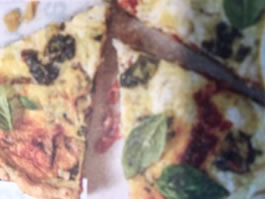Easy Math for a Healthier You
Parade Magazine, July 19, 2020
 Many doctors are starting to believe we fixate much on our weight as a relation to health. There are some other key things we can focus on as a better indication of what benefits the body.
Many doctors are starting to believe we fixate much on our weight as a relation to health. There are some other key things we can focus on as a better indication of what benefits the body.
Counting steps can be fun but 10,000 isn’t a magic number. A Brigham Young University study found that 10,000 steps a day didn’t help subjects lose weight compared to those walking half as much. Walking should be only part of a total fitness routine. Most Americans walk about 5,000 steps a day which is about 2 miles.
Experts agree that the focus should be more on working up a sweat at least 300 minutes a week. Aim for 30 minutes 5 to 7 days a week. Adding 30 more minutes each day is even better. Be aware of your body-mass index. (BMI). From middle age on, you can lose 3 percent of muscle mass a year, a leading cause of disability, insulin resistance and related health woes. Tools to measure fat and muscle include BMI measurements that can be done at many fitness facilities or by your physician. Do resistance training with bands or weights at least two to three times a week. This is crucial to keeping and building precious muscle.
 Focus on waist size. More reliable than the scale or BMI to flag health risks is the simple act of measuring around your waist. Waist circumference is considered a good marker for metabolically active visceral fat. That s the kind of fat you don’t want. For men, the goal is under 40 inches, for women ,35 inches. A 2017 study of five ways to measure abdominal obesity, including BMI, found the most reliable was waist-to -height ratio which uses both measurements. A man who is 6 feet tall should have a waist under 36 inches, woman who is 5-foot-4 should aim for under 32 inches. You can find a simple WHtR (waist to height) calculator online.
Focus on waist size. More reliable than the scale or BMI to flag health risks is the simple act of measuring around your waist. Waist circumference is considered a good marker for metabolically active visceral fat. That s the kind of fat you don’t want. For men, the goal is under 40 inches, for women ,35 inches. A 2017 study of five ways to measure abdominal obesity, including BMI, found the most reliable was waist-to -height ratio which uses both measurements. A man who is 6 feet tall should have a waist under 36 inches, woman who is 5-foot-4 should aim for under 32 inches. You can find a simple WHtR (waist to height) calculator online.
Know how to calculate your maximum heart rate (220 minus your age). Go by your breathing. At moderate-intensity exercise which is about 70 percent of your maximum heart rate, you can still talk but not sing. At high intensity (85%) you can only say a few words each breath. For serious athletes, a medically supervised exercise stress test is the most accurate way to find max heart rate. Slow down if it’s straining or push yourself if it’s easy.
Your cholesterol numbers highlight your risk of diabetes, heart disease and Alzheimer’s, but don’t forget your triglycerides. A type of fat in the blood, when levels above 150 mg/dl are treated with medication, diet and exercise, benefits follow. When triglycerides go down, good cholesterol goes up.
Pose of the Month
High Lunge
article by Ann Swanson, Science of Yoga
 This foundational shape lengthens hip flexors and engages the core, preparing you for more demanding poses. There are several modifications which makes this strengthening pose available to everybody.
This foundational shape lengthens hip flexors and engages the core, preparing you for more demanding poses. There are several modifications which makes this strengthening pose available to everybody.
This pose lengthens hip flexors and engages the core. A good challenge for building muscles and improving balance. Get into the pose from downward facing dog then rise up. Making sure your front knee is stacked above your ankle. Feel the lift in your ribcage as you raise your arms. Frame your face with your arms. Slightly lift your chin as you scissor your thighs together and press down into your feet and engage the core. Make sure your feet are hip distance apart and you are on the ball of your back foot. Hands can be on hips as an alternative. High lunge engages the psoas in two ways: The front hip gains strength as it contracts while the other gets a stretch. This pose can even be done in a chair by turning 90 degrees, then moving into a lunge position. Hold for 5 – 10 deep breaths. This encourages the hip flexor to relax.
 The psoas is part of the hip flexor and plays a key role in your stress response. It is used for kicking or running. Too much sitting or overdoing activities, like running or biking-can cause this muscle to chronically clench. Consciously practicing yoga postures that strengthen, stretch, and relax the psoas can liberate it from habitual holding patterns, improving your posture and strengthen your ability to cope with and release fear and stress.
The psoas is part of the hip flexor and plays a key role in your stress response. It is used for kicking or running. Too much sitting or overdoing activities, like running or biking-can cause this muscle to chronically clench. Consciously practicing yoga postures that strengthen, stretch, and relax the psoas can liberate it from habitual holding patterns, improving your posture and strengthen your ability to cope with and release fear and stress.
An alternate way to easily stretch the psoas is to lie on the floor with calves resting up on a chair or couch. A variation of legs-up-the-wall. Try it, it feels great.
The Sound of Healing
by Stacey Colino
 We all know the power of music to move us. Research now show that tuneful therapy is a natural painkiller as well. Music can be good medicine, and not just for the soul. “Certain selections nourish your physical body,”says Hal Lingerman, author of The Healing Energies of Music. Music can relieve pain and anxiety, enhance immune function and brain function, alleviate stress n spur physical rehabilitation. From life’s beginning when it can ease the agony of childbirth and calm babies in neonatal intensive-care units to its end by comforting those in hospice care and lightening the grief of loved ones. Music just isn’t the soundtrack of our existence. It can be the conductor of our well-being.
We all know the power of music to move us. Research now show that tuneful therapy is a natural painkiller as well. Music can be good medicine, and not just for the soul. “Certain selections nourish your physical body,”says Hal Lingerman, author of The Healing Energies of Music. Music can relieve pain and anxiety, enhance immune function and brain function, alleviate stress n spur physical rehabilitation. From life’s beginning when it can ease the agony of childbirth and calm babies in neonatal intensive-care units to its end by comforting those in hospice care and lightening the grief of loved ones. Music just isn’t the soundtrack of our existence. It can be the conductor of our well-being.
Music has shown to induce definite changes in the central nervous system’s activity. It helps stimulate theta and alpha waves in the brain that are associated with creativity and insight. It can actually help you think more clearly. More importantly, the right rhythms have been shown to reduce the stress response and increase the relaxation response. Aristotle and Plato both wrote about the healing powers of song. However, music therapy didn’t become a formalized field until after World War II. Musicians often visited veterans’ hospitals to entertain those suffering the scars of war, it didn’t take long for doctors and nurses to recognize the positive physical and emotional effects.
 At the Mayo Clinic, patients who underwent heart surgery experienced a significant decrease in pain and an easier time relaxing in the days immediately following their procedure after listening to music that included nature sounds. Those results could be the result of a boost in oxytocin (often referred to as the love hormone).
At the Mayo Clinic, patients who underwent heart surgery experienced a significant decrease in pain and an easier time relaxing in the days immediately following their procedure after listening to music that included nature sounds. Those results could be the result of a boost in oxytocin (often referred to as the love hormone).
Music therapy has been shown to help autistic children with expressive language skills and help with interaction. It also helps people with Alzheimer’s and dementia who have lost the ability to speak. I noticed this with my own mother after her stroke. She would mouth the words and I could see the spark in her. It has shown to improve the quality of life for people with cancer, lowering levels of pain, anxiety and depression. It has been shown to help with nausea and decrease nighttime restlessness.
Congresswoman, Gabby Gifford who was shot in the head in 2011, regained speech, motor skills and sensory perception and emotions after undergoing music therapy. Her language pathways in the brain had been damaged. Music therapy helped train her brain to forge a different route to spoken language. She began by repeating basic phrases in a singsong voice. Eventually she was uttering phrases to the beat. This is known as entrainment; a body’s biological rhythms realign with external musical rhythms.
So, if you’re feeling down, turn up the volume. Make music a part of your overall health.
Recipe of the Month-Southern Kitchen Quiche
Sun-Dried Tomato and Spinach Quiche

Roll flaky pie dough or use refrigerated pie crust (I like Pillsbury)
In a large nonstick skillet over medium-high heat, heat 1 Tbsp olive oil. Add 1 clove minced garlic and 1 5 oz pkg of baby spinach; cook 2-3 minutes or until spinach wilts. Spread mixture and ½ cup julienned sun-dried tomatoes in olive oil evenly in bottom of pie crust. In a medium bowl, whisk 4 large eggs, ½ cup grated Asiago or Parmesan cheese, ½ cup mayonnaise, ½ cup whole milk, ¼ cup chopped fresh basil, ½ tsp sea salt and ½ tsp ground black pepper. Pour over spinach mixture. Dot top with 1 4 oz log of goat cheese, crumbled. Bake 35 – 40 minutes or until set. Cool on wire rack before cutting into wedges. Garnish with additional basil. Serves 6-8.

“I have been impressed with the urgency of doing. Knowing is not enough; we must apply.
Being willing is not enough; we must do.”
Leonardo da Vinci

